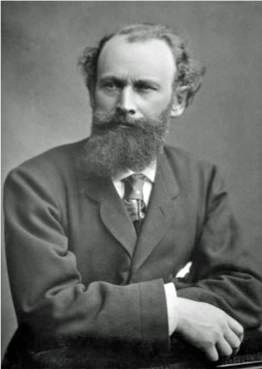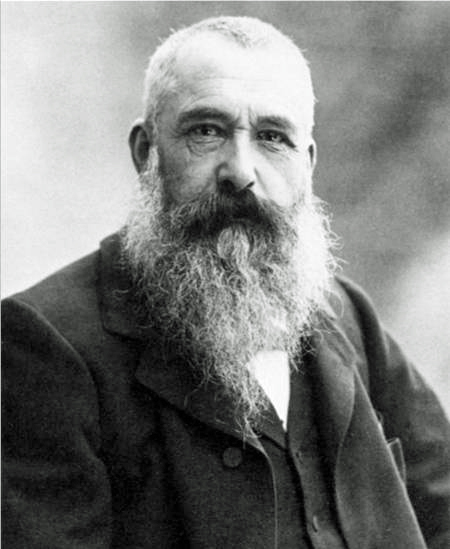 Édouard Manet |
Baudelaire and the Impressionist Revolution |
 Claude Monet |
|
|
Berthe Morisot (1841-1895)
Berthe Morisot was born in 1841, into a wealthy bourgeois family who encouraged her and her sister Edma Morisot in their pursuit of art. Once Berthe settled on a career as a painter, her family did nothing to impede her. In 1861, she met the important landscape painter, Camille Corot. He introduced her to other artists and teachers and she began to paint, on site, in the open air (plein air). She produced many small paintings, such as the landscape entitled View of Paris from the Trocadero (see below) using this technique, either as finished works or as studies for larger works completed in the studio. In 1864, Morisot's submitted two landscape paintings to the Paris Salon; both were accepted. She continued to show regularly in the Salon until 1874, when she chose to submit her works to the First Impressionist Exhibition. She continued to exhibit with the Impressionists. Indeed, Morisot, along with Camille Pissarro, were the only two artists who exhibited in all eight of the Impressionist Exhibitions (1874-1886). She became acquainted with Édouard Manet in 1868. In 1874, she married Eugene Manet, Édouard's younger brother. As a female artist, like Mary Cassatt, Morisot was limited in her choice of subject matter, i.e., mostly pictures of women, children, and domestic scenes. However, as a dedicated Impressionist, Morisot painted what she saw in her immediate, everyday life. As a woman of the "haute bourgeoisie" she saw domestic interiors, holiday spots, other women, and children of the same social class. Without exception, her subject matter and artistic style was similar to that of her male Impressionist colleagues. Berthe Morisot died in Paris on March 2, 1895 and was interred in the Cimetière de Passy, the same cemetery where Édouard Manet is buried.
View of Paris from the Trocadero (1871-1872)
Almost all of Morisot's paintings were small in size, View of Paris from the Trocadero measures only about 18 by 32 inches and it is one of the few landscapes that she ever painted. Most of Morisot's paintings were portraits of family and friends, particularly her sisters Yves Gobillard and Edma Pontillon and their children. In 1874, Berthe married Eugene Manet (brother of Edouard Manet) and their only child, Julie, was born in 1879. Julie soon became a favorite subject for Morisot's paints and no little girl has ever had a better record of her early life documented in paintings. Berthe Morisot's painting, View of Paris from the Trocadero (Vue de Paris depuis le Trocadéro), was completed in 1872, a few months after the conclusion of the Franco Prussian War and the suppression of the Paris Commune. She probably felt that it would be desirable to paint a new view of the city now that it was finally at peace with itself. She had always been keenly interested in the relationship between the Paris suburbanites and the dwellers in the city center. Her painting provides a panoramic view of the Seine River valley, a bridge called the Pont d'Léna, and the Paris skyline - all viewed from the crest of the hill of Chaillot, popularly known as the Trocadero. The very top of hill of Chaillot was known as the Place de Trocadero, named in remembrance of an 1823 French victory in Spain at the Battle of Trocadero. In 1872, there were very few structures on the hill; it was basically a pleasant and safe grassy area near the home of Berthe Morisot's parents in the upper-middle class suburb of Passy. The hill of Chaillot is now the location of the Palais de Chaillot which was built in 1937. Directly across from this palace, on the opposite bank of the Seine, stands the Eiffel Tower (built 1889). At the current time (2006), Passy is still one of the wealthiest parts of Paris and features some of the highest housing prices in all of France. Passy is now a part of Paris - the16th Arrondissement. The Pont d'Léna was built by Napoleon I to celebrate his victory in 1806 over the Prussians. In 1937, the bridge was widened to provide better access to the newly constructed Palais de Chaillot. Prominent features of the Paris skyline, as depicted by Morisot in the painting, include: 1) The Arc de Triomphe is vaguely outlined on the central part of the skyline. The arch was first commissioned in 1806 by Napoleon Bonaparte to commemorate his victory at Austerlitz; however, it was not completed until 1836 during the reign of King Louis-Philippe. 2) To the right of the Arc de Triomphe, is the golden Dôme des Invalides, part of the Hôtel des Invalides complex, which was originally built as a hospital for disabled veterans by Louis XIV. Under the huge dome are the tombs of many prominent Frenchmen such as Vauban, Turenne and Foch. The most important occupant is Napoleon I, whose remains were interred there in a massive crypt in 1861. 3) The dome of the Pantheon, appearing just to the right of the Dôme des Invalides. The Pantheon was originally a church, built by the order of Louis XV, but not completed until the eve of the French Revolution in 1789. During the Revolution, the building was changed from a church to a mausoleum dedicated to the interment of great Frenchmen. In 1872, the notables interred there included Voltaire (1694-1778), Rousseau (1712-1778) and Marat (1743-1793). 4) The skyline includes the spires of several churches, including the most famous Gothic Cathedral in all of France, the Cathedral de Notre Dame.
The figures in the foreground, all female, are probably Morisot's two sisters Yves and Edma; the little girl is probably Yves's daughter Bichette. The usual interpretation of this painting is that it is making a sociological statement regarding the very constrained status of women in 19th Century France. Morisot's work was painted in a typically Impressionist style. Some key points concerning the way in which this painting was created are as follows:
|
|
|